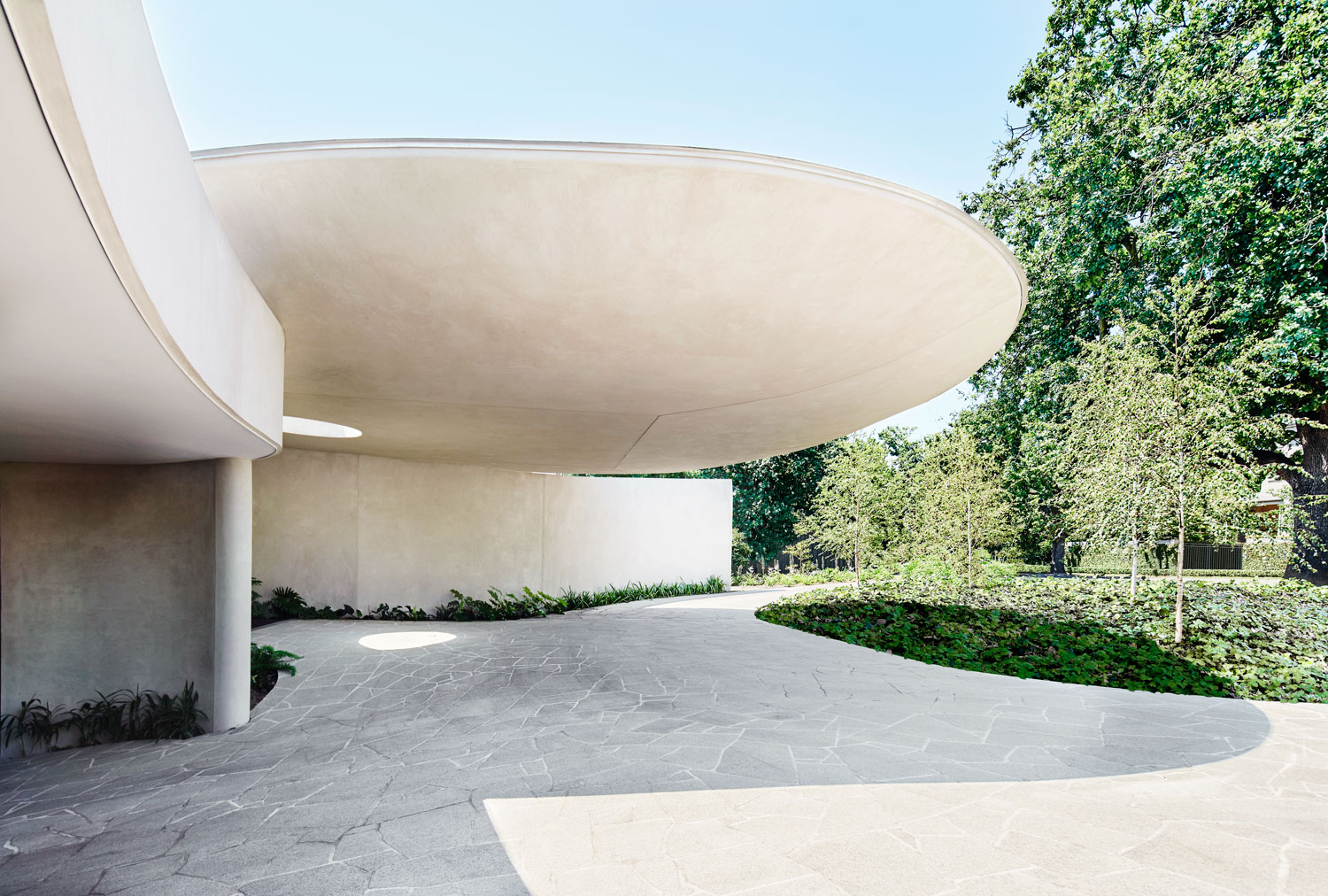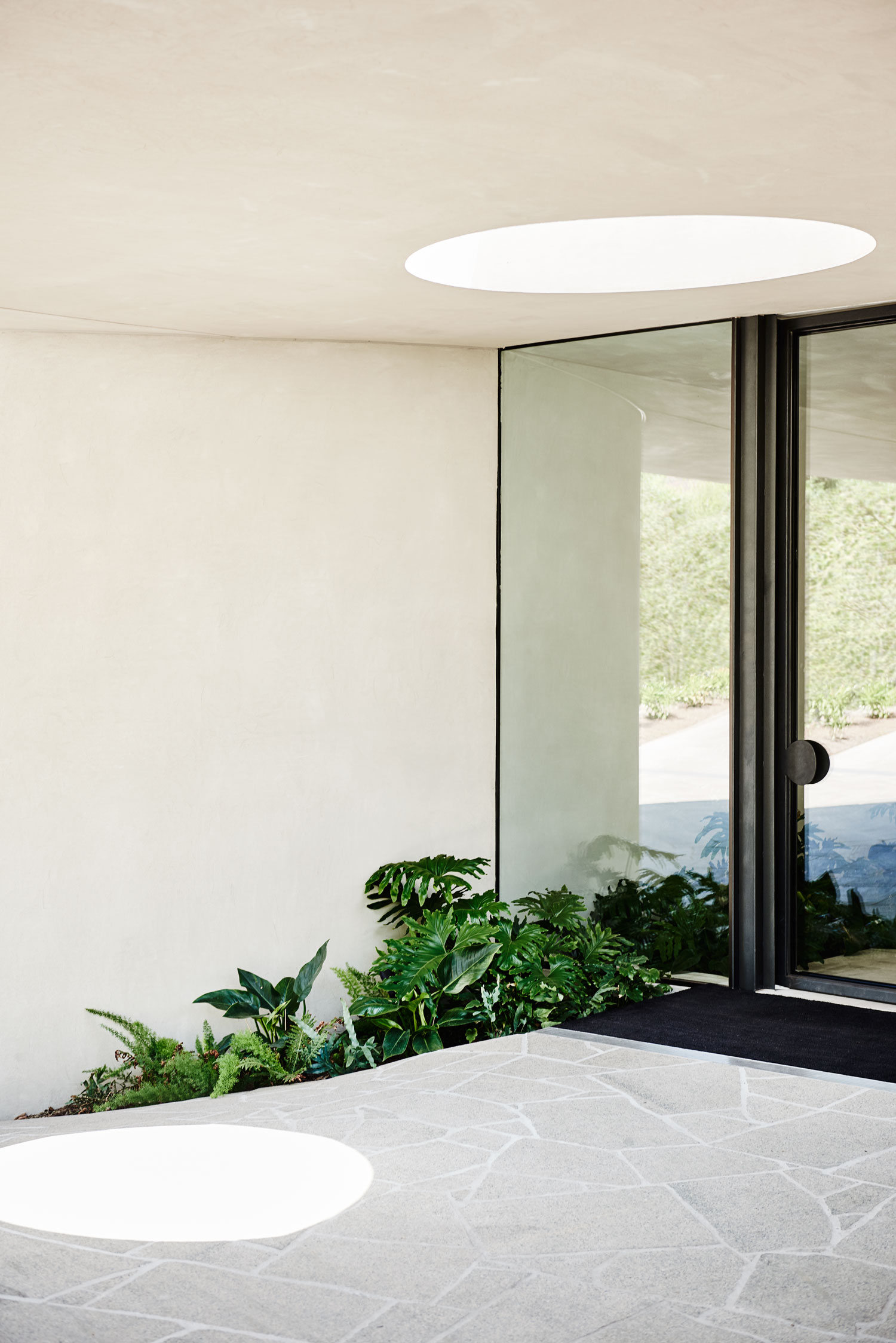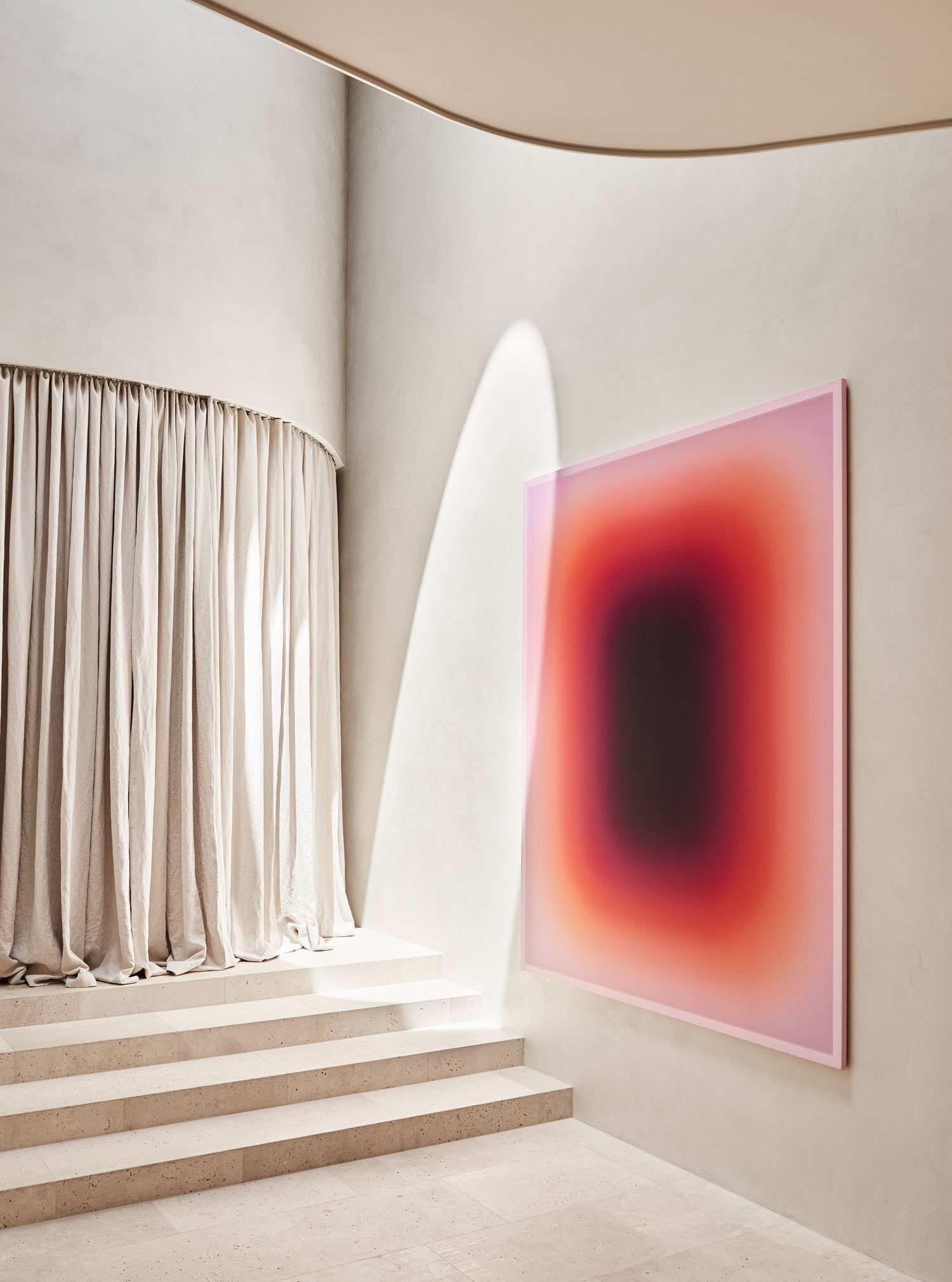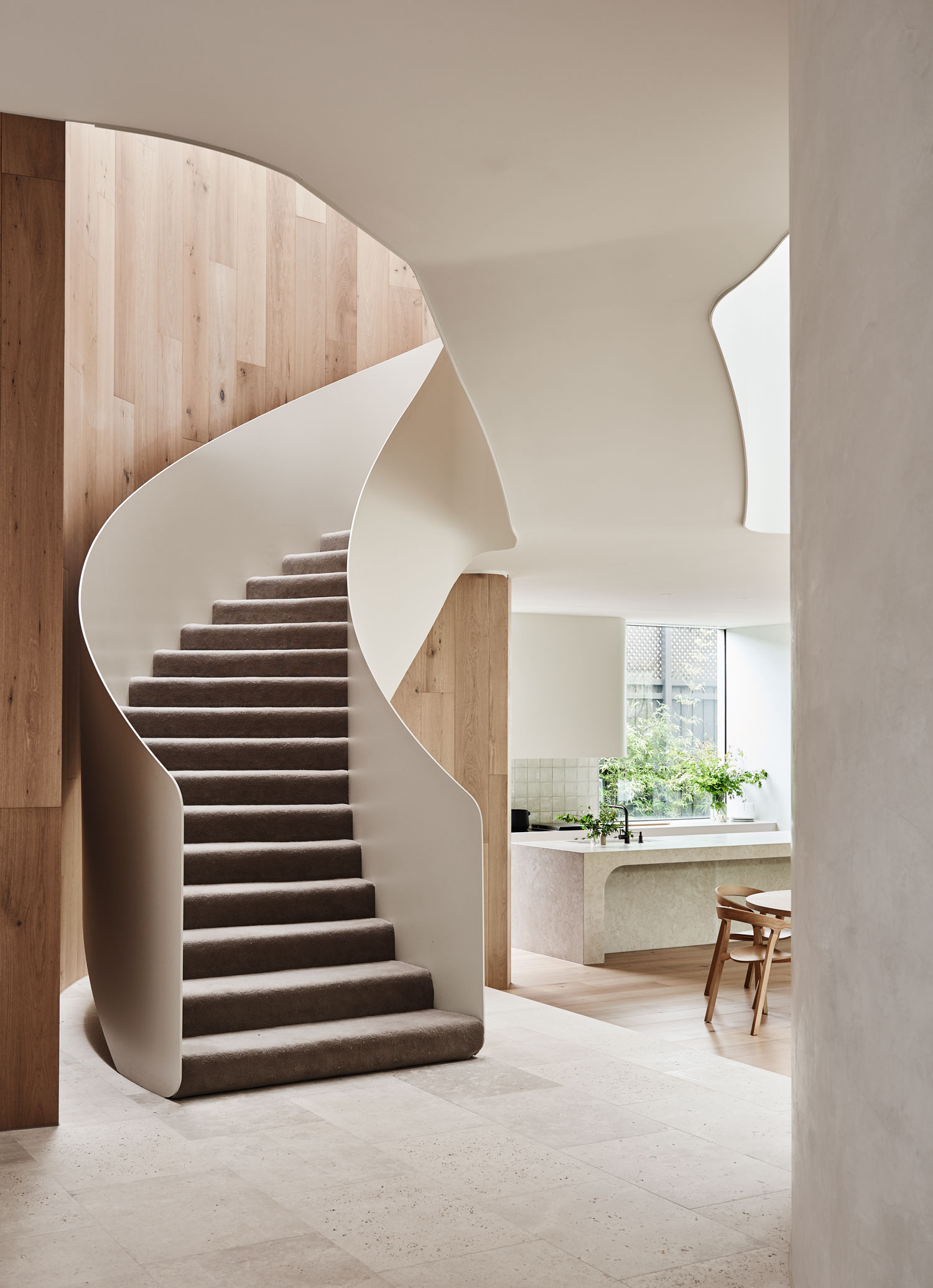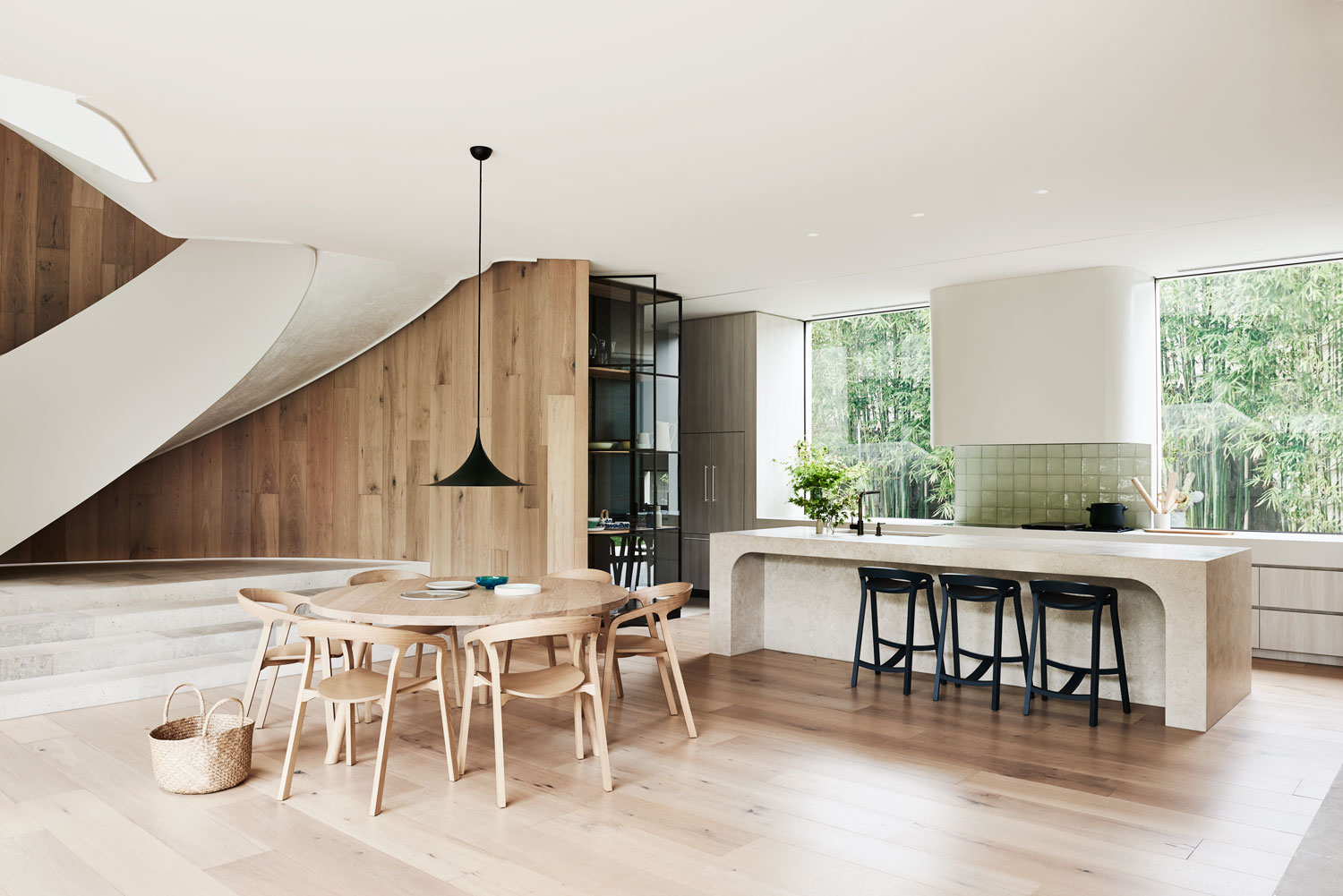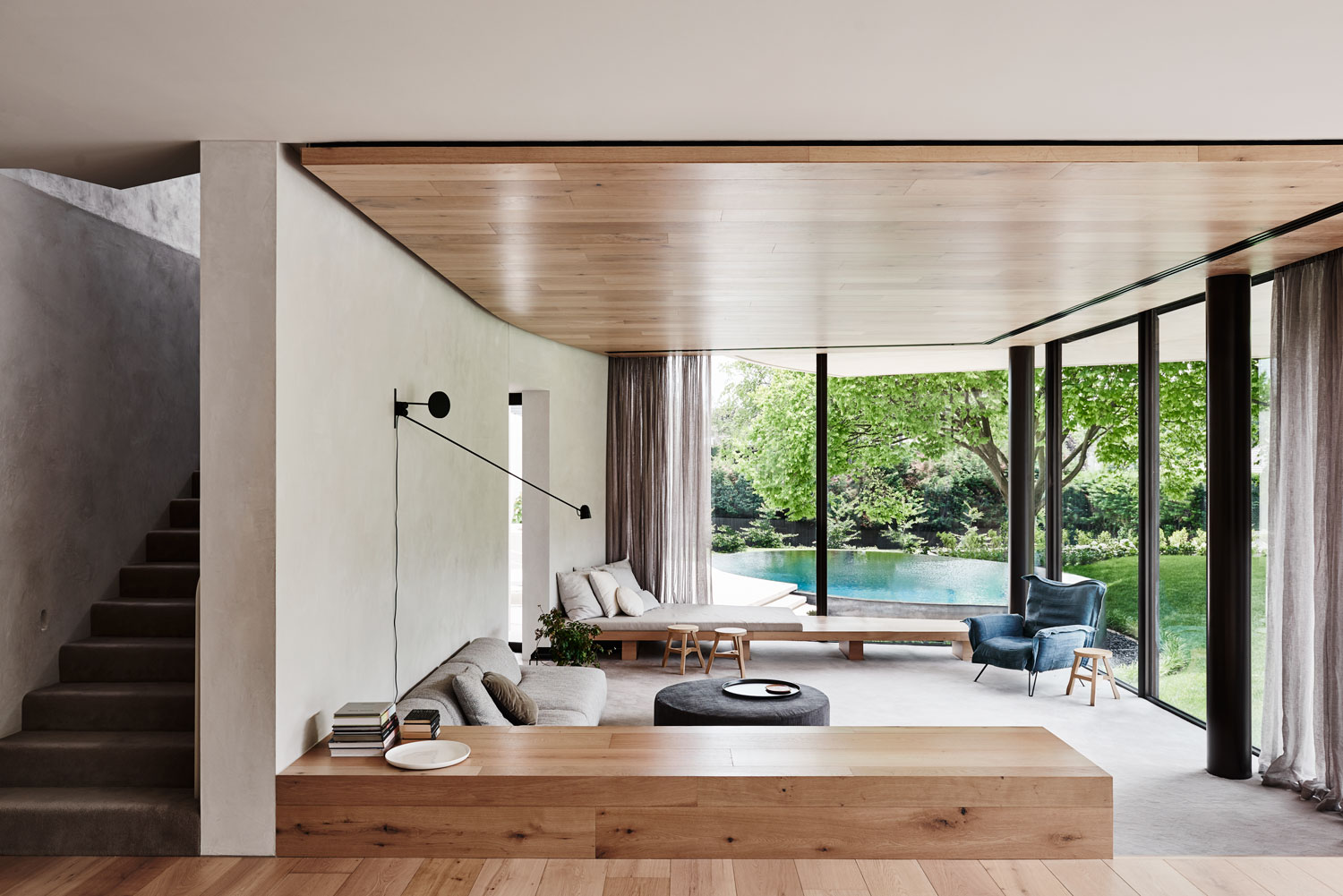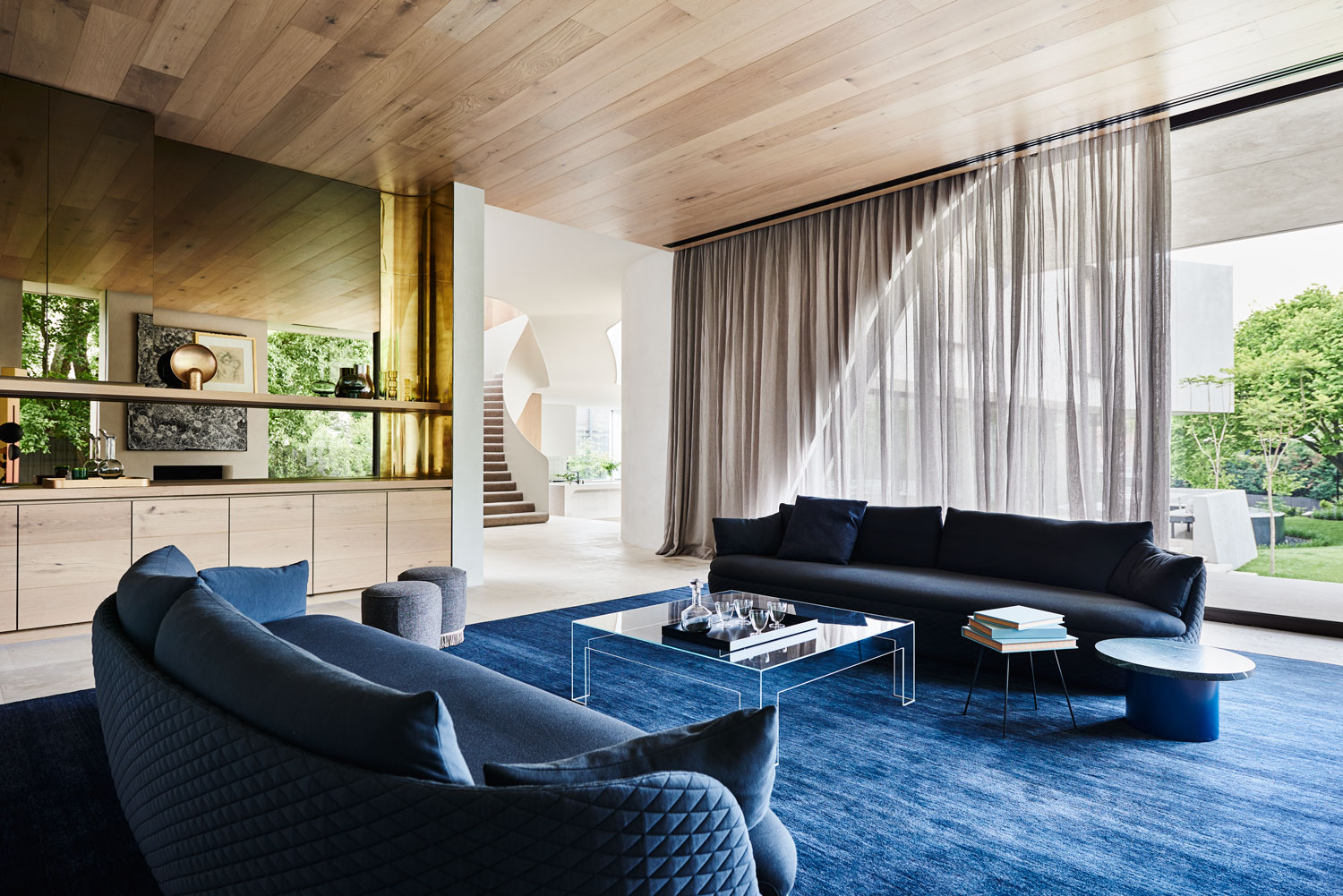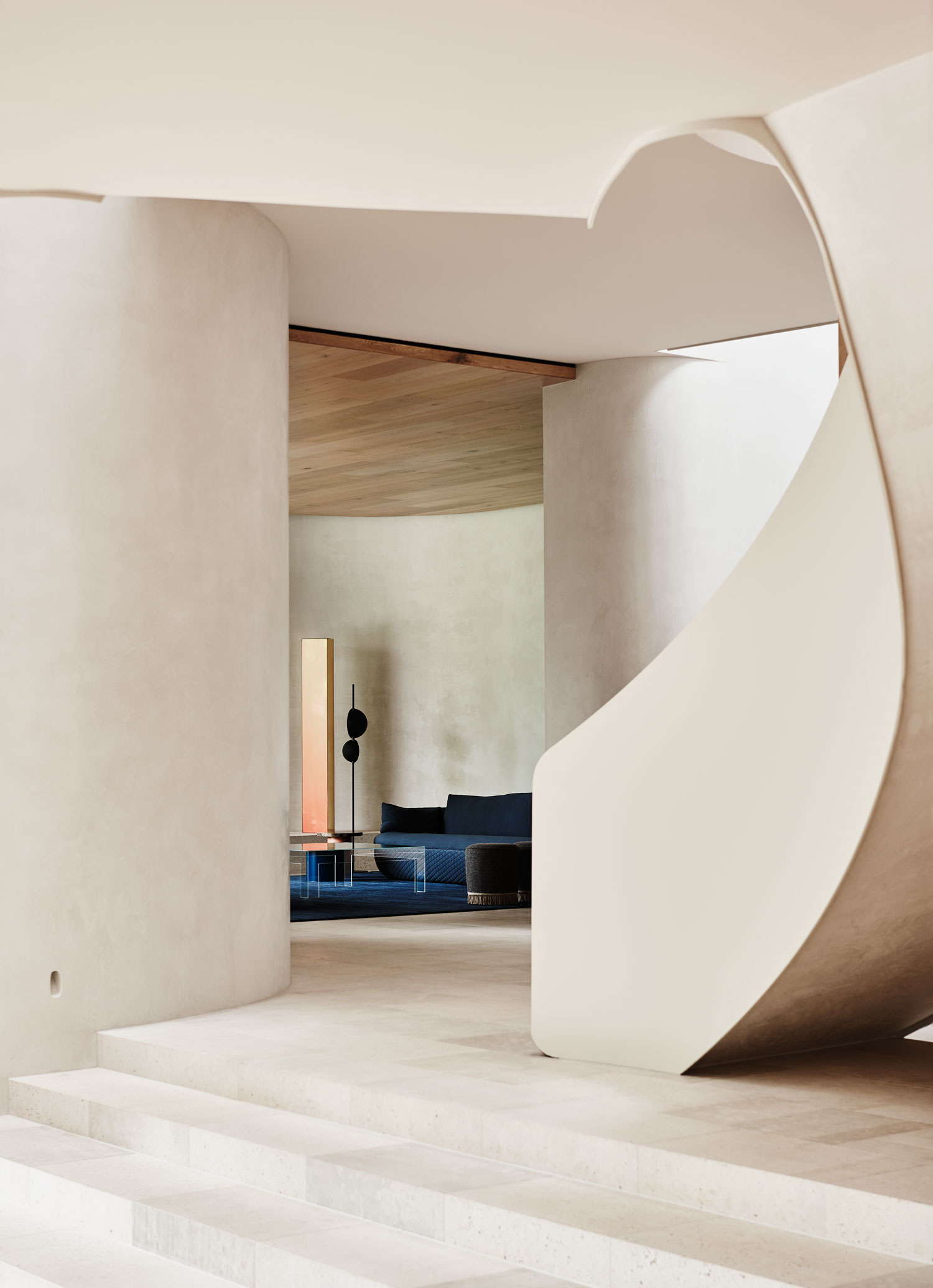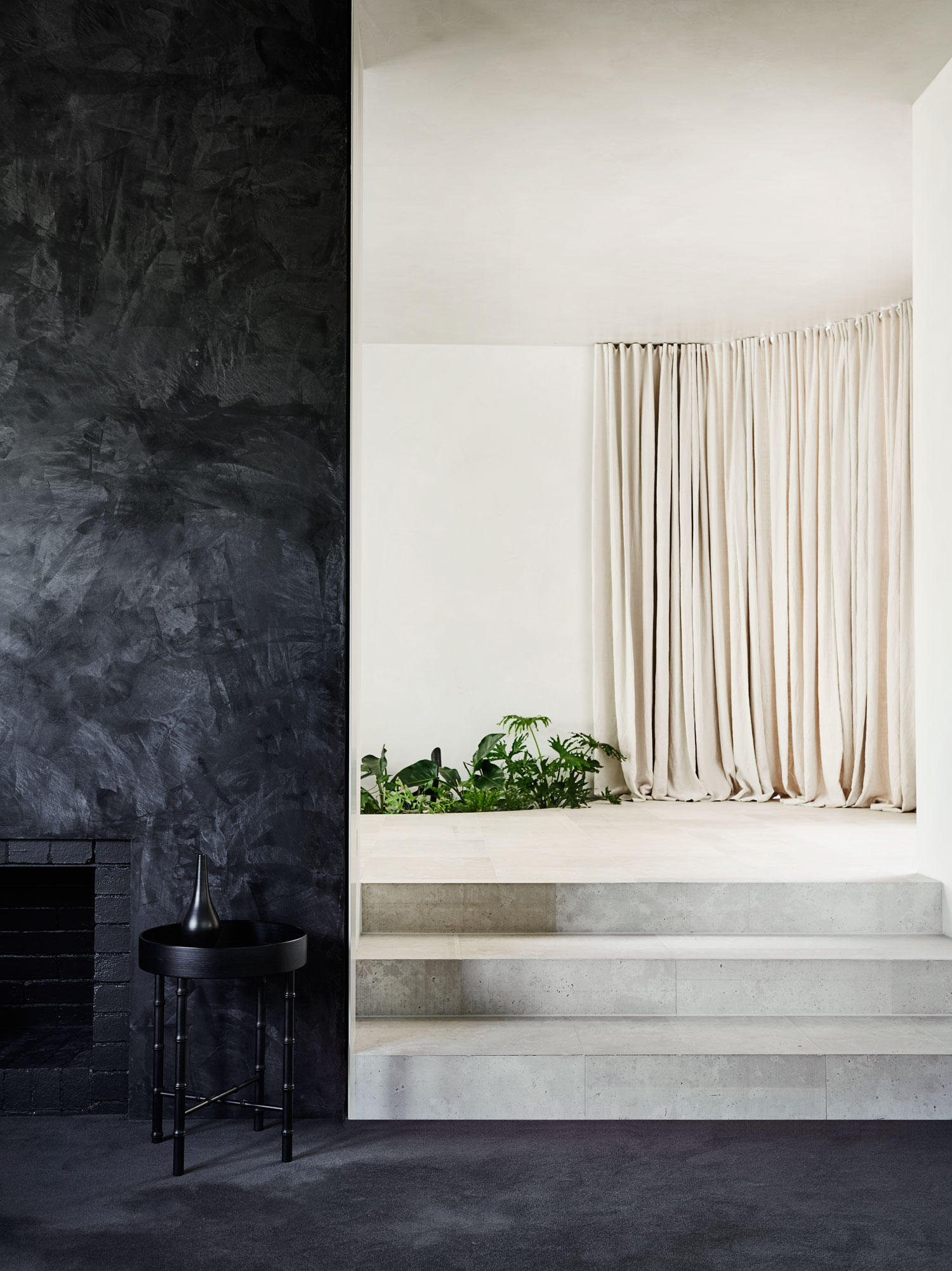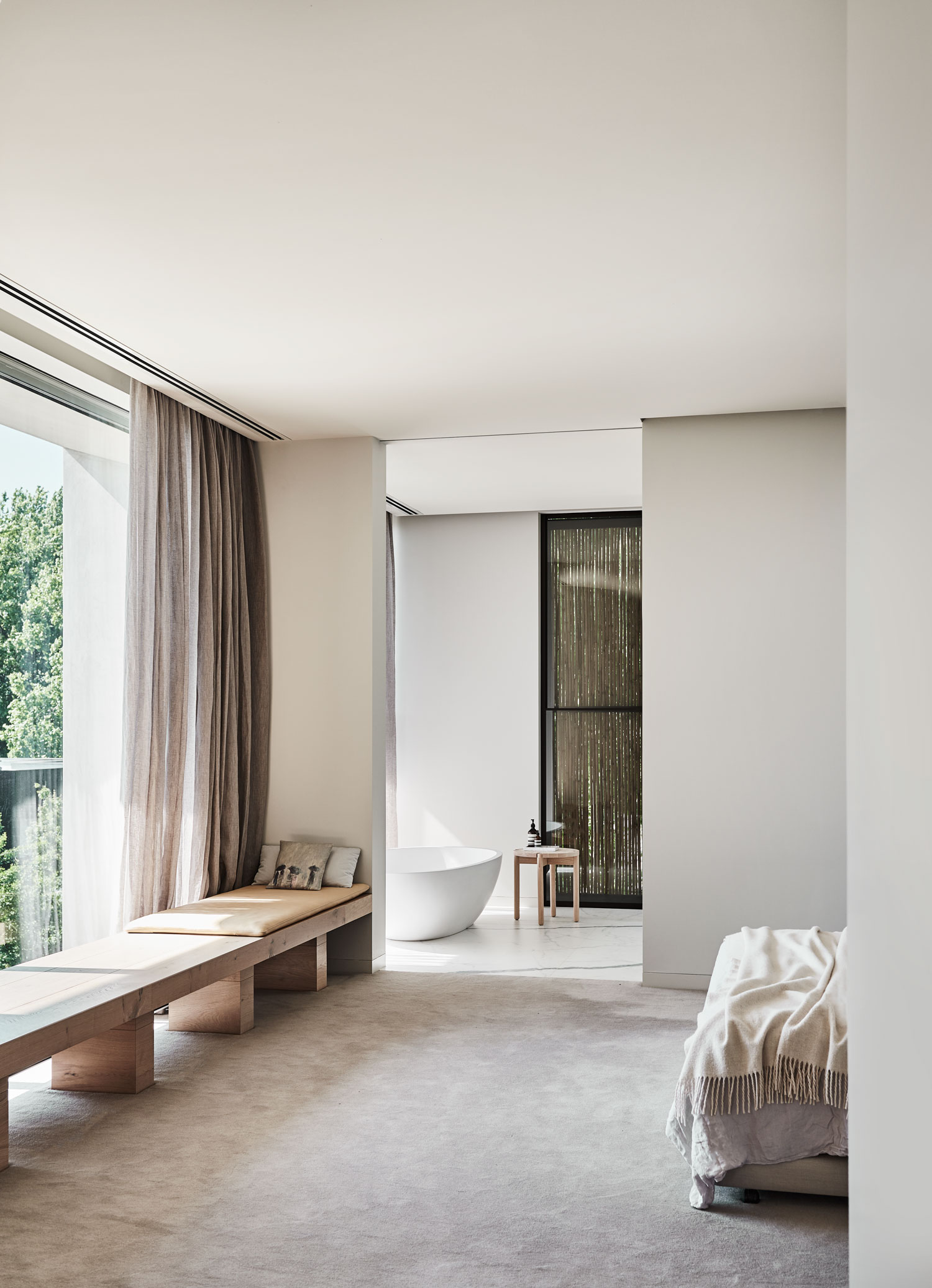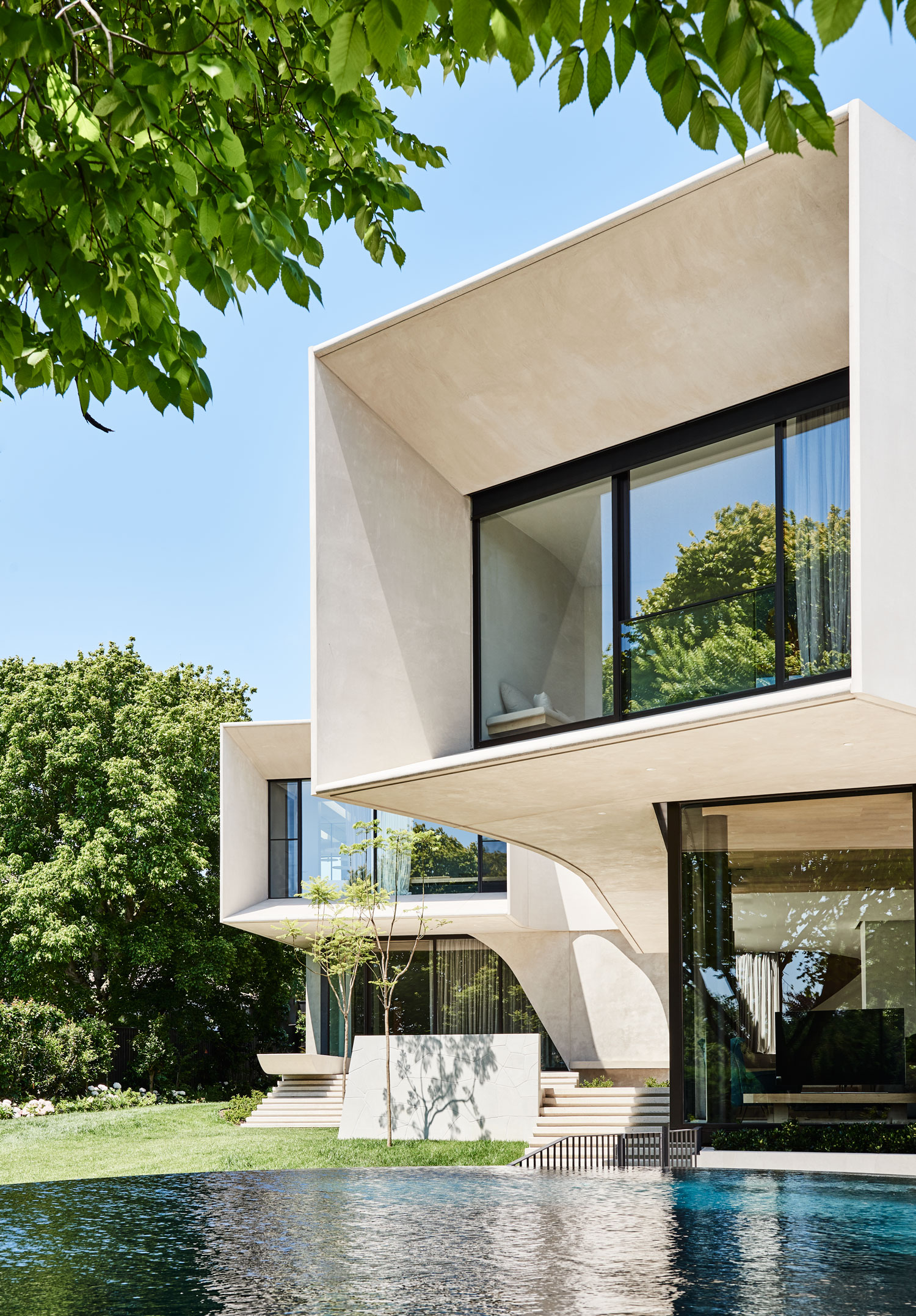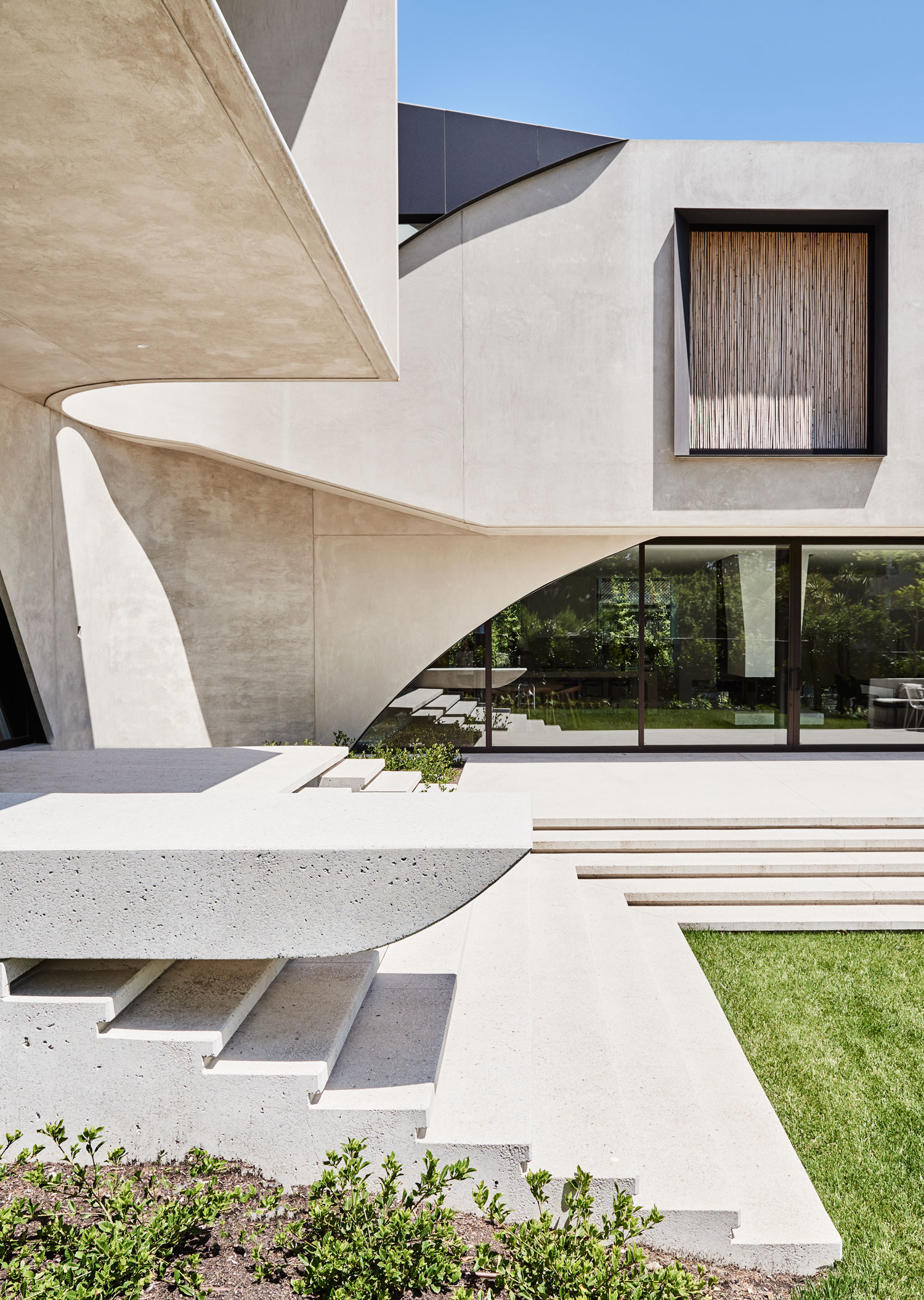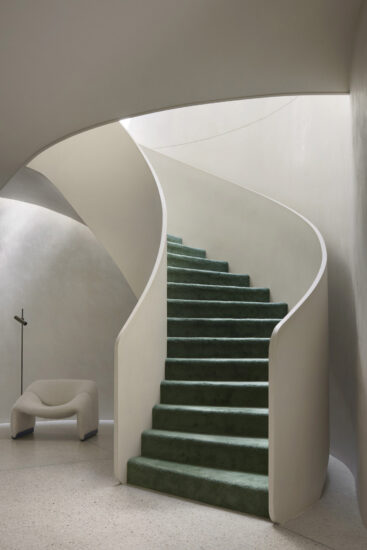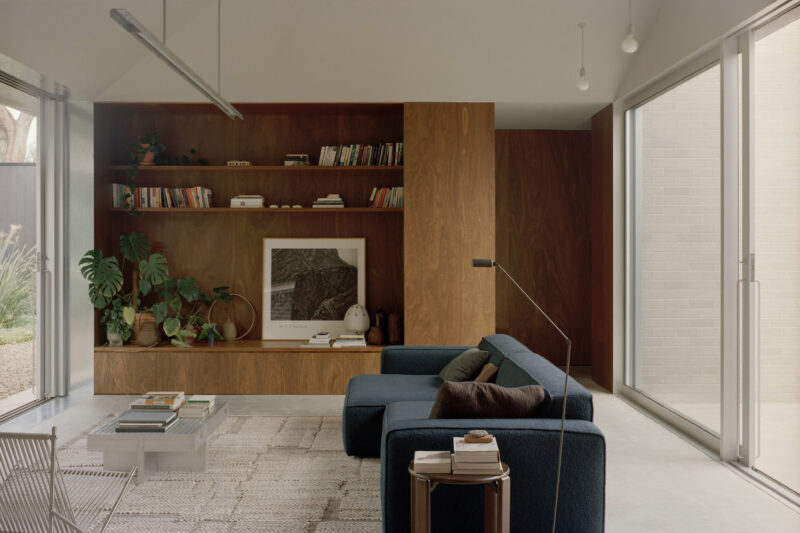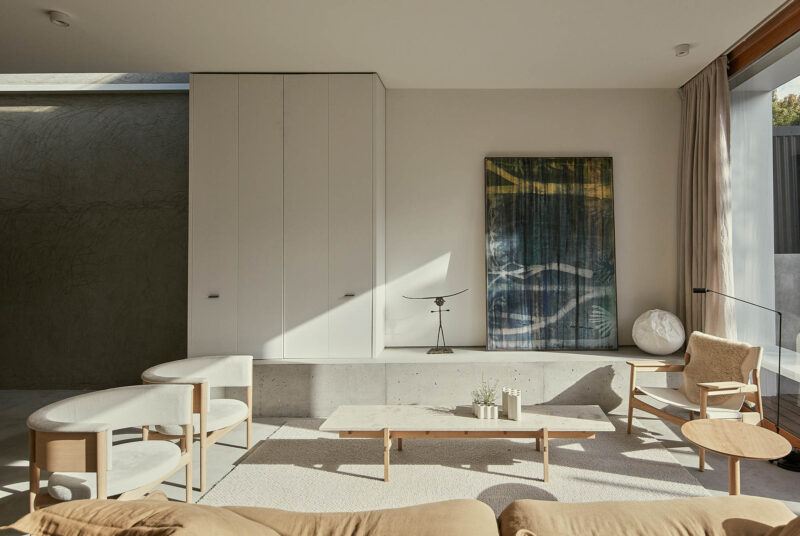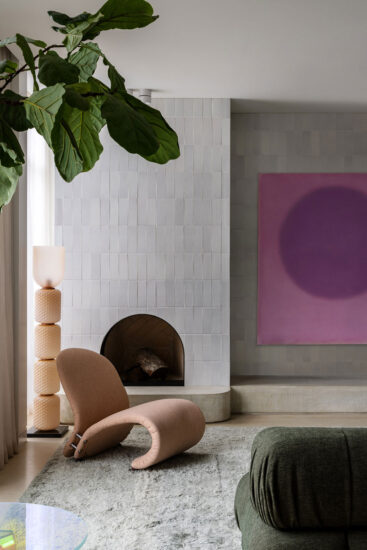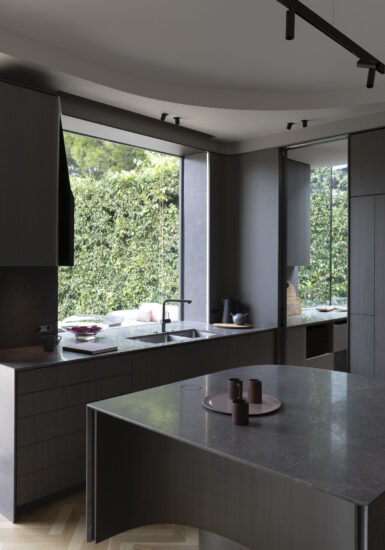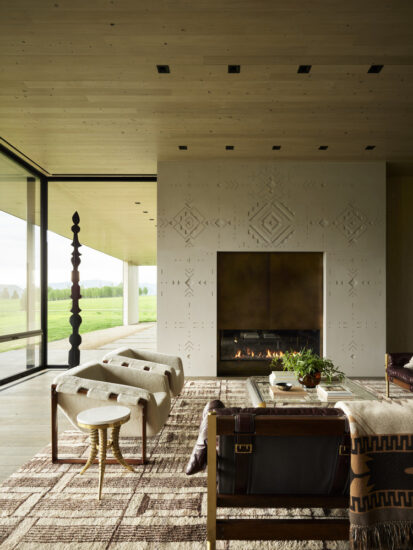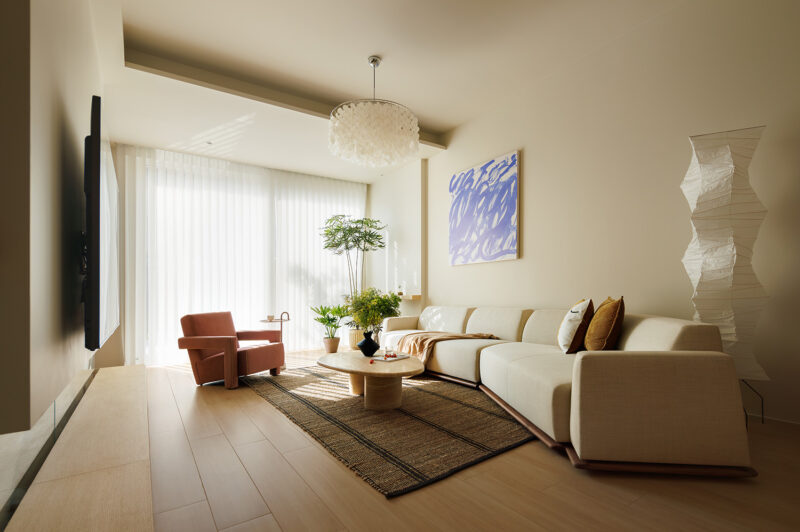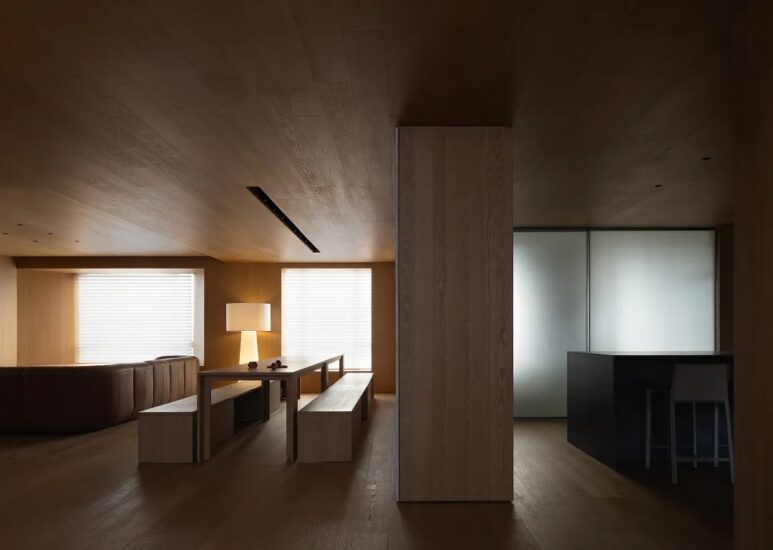Canopy House既是有机形式又是建筑形式,坐落在墨尔本内城一条既有住宅街上的大型梧桐树之中。Leeton Pointon在多变的街景中加入了一层现代元素,构想了一个宁静的庇护所,它在体量和失重之间实现了微妙的平衡,从而带来动感而优雅的效果。雕塑般的实心墙遮盖了房屋,在其后部,一个弯曲的体量似乎漂浮在入口上方的空气中。一扇带有侧灯的透明玻璃枢轴门打破了墙壁,露出了室内空间。
Both organic and architectural in form, Canopy House is set amongst large plane trees on an established residential street in inner Melbourne. Adding a contemporary layer to the varied streetscape, Leeton Pointon conceived a calm refuge, using a delicate balance between mass and weightlessness to deliver a dynamic and elegant result. A sculptural solid wall conceals the house, behind which a curved volume appears to float in thin air above the entrance. A clear glazed pivot door with sidelights punctuates the wall to reveal the interior.
带纹理的外墙给人一种微妙而低调的感觉,房子作为一个背景来营造忙碌的家庭生活。建筑师将一楼的形式描述为“水性”,并流向后花园,在花园中它可以轻轻地折叠到地面。可以从小孔窥探室内生活,而开放式玻璃则充分展示了花园的一面。
Textured rendered facades give a subtle and understated feel, with the house built as a backdrop to nurture busy family life. The architects describe the form of the first floor as ‘aqueous’, flowing around to the rear garden where it folds gently to the ground. Small apertures hint at life inside, while open glazing makes the most of the garden aspect.
起伏的草坪和花园区域围绕两棵保留下来的大榆树精心设计。升高的椭圆游泳池和甲板露台保持与起居室同一水平,将树木反射到室内,创造连续性的景观,同时最大限度地减少了对游泳池围栏的需要。
The undulating lawn and garden areas are carefully designed around two large retained elm trees. An elevated elliptical pool and deck terraces are set at living room level, reflecting the trees into the interior and creating continuity of landscaping while minimising the need for pool fencing. Generous exposed aggregate steps bridge the transition from house to garden.
一楼的实心粗糙的墙壁为下面的生活区提供了北面的防晒保护。带有角钢环绕板的大型滑动竹帘可在二楼进一步控制日光,同时为卧室提供斑驳的光线。:西向的窗户提供了进一步的保护,免受阳光的照射和邻居的隐私。隐蔽的外部百叶窗可防止在夏季月份直接照射玻璃,以减少热量获取。
The solid roughly rendered walls of the first floor provide north sun protection to the living areas below. Large sliding bamboo screens with angled steel plate surrounds allow for further sun control on the first floor while providing dappled light to the bedrooms. Deep west-facing windows offer further protection from the sun and privacy from neighbours. Concealed external blinds prevent direct light on glazing during the summer months to reduce thermal gain.
室内设计以抛光的弧形石膏墙为特色,它分隔了不同的区域,精心布置的流通空间扩展到更公共的生活区。内部水平面的变化反映了基地的不同层次,而从石灰石瓷砖到木材和地毯的地板材料的变化微妙地加强了使用的变化。木材还覆盖了某些区域的墙壁和天花板,在抹灰和亚麻窗帘和黄铜装饰等元素的衬托下增加了层次感。
Interiors by Allison Pye feature curved polished plaster walls which separate zones, with careful placement of circulation spaces widening into more communal living areas. Changes of level inside acknowledge the various levels on the site, while changes in floor materials from limestone tiles to timber and carpet subtly reinforce the change of use. Timber also clads the walls and ceilings in some areas, adding layered texture against the plaster along with elements such as linen curtains and brass features.
可持续性与所有技术和服务都无缝集成到建筑结构中,不说则很难被发现。除隐藏在屋顶上的太阳能电池板外,还安装了一个84,000升的水箱来收集雨水。
Sustainability is seamlessly integrated into the building fabric yet remains unseen, along with all technology and services. An 84,000-litre water tank was installed to harvest rain water, in addition to solar panels concealed on the roof.
主要项目信息
项目名称:Canopy House
项目位置:澳大利亚墨尔本
项目类型:住宅空间/私人住宅
完成时间:2019
设计公司:Leeton Pointon
摄影:Lisa Cohen

